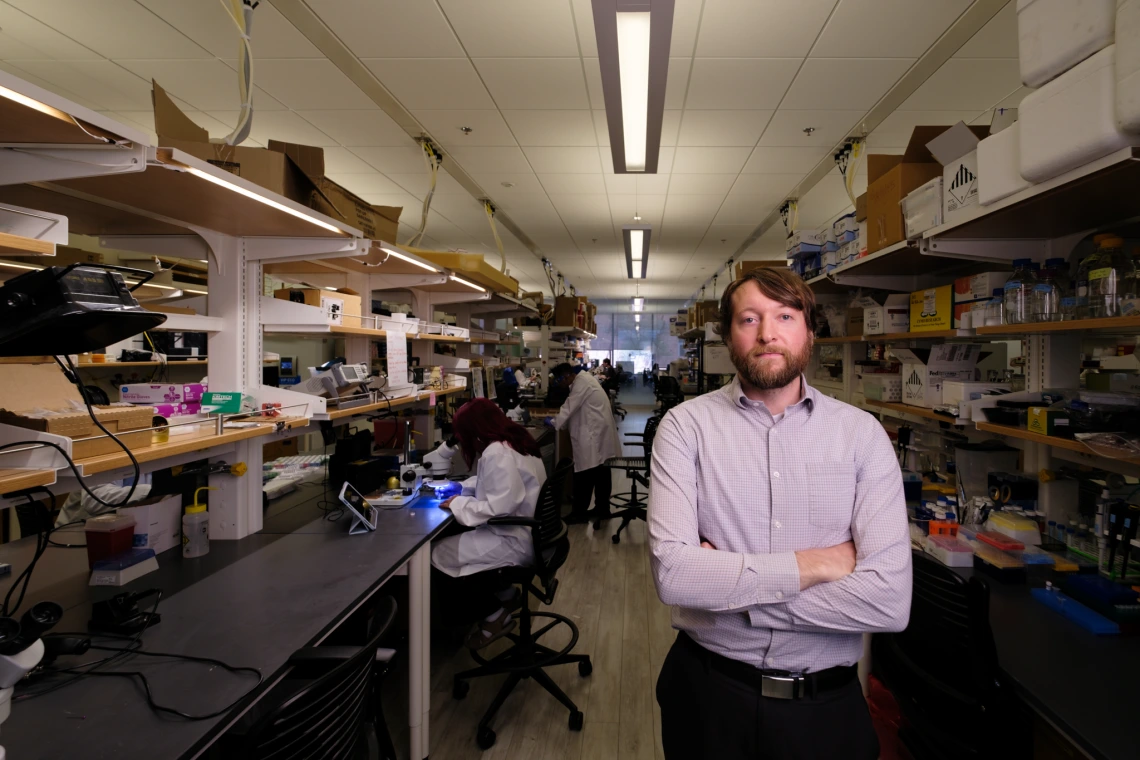Reimagining Implantable Medical Devices
Support from the da Vinci Circle fuels groundbreaking work on implantable biomedical sensor technology.

Philipp Gutruf
Photo provided by the College of Engineering
As a boy in the Black Forest region of Germany, Philipp Gutruf tinkered with mopeds and electronics in his family’s garage. “That is not necessarily your typical academic path — getting the hands dirty,” says Gutruf, associate professor of biomedical engineering and associate department head of undergraduate affairs at the University of Arizona College of Engineering. “That gives you a different perspective on how you approach scientific problems.”

The Gutruf Lab is developing biomedical sensors for inside and outside the body.
Photo provided by the College of Engineering
Now Gutruf is using that perspective to develop implantable biomedical sensors to treat, monitor and mitigate disease — an innovation that has the potential to revolutionize health care. In recognition of these advances, and for his dedication to mentoring students, the College of Engineering chose him as the 2024 da Vinci Circle Fellow, which comes with a one-time grant of $10,000, thanks to generous da Vinci Circle donors.
“We have X-ray and CT scans, but that’s been around for 20 years,” he says. “We can do therapy now that is absolutely tailored to the condition of your rehabilitation.”
One device has a wireless, battery-free sensor that illuminates to signal neuron damage, while “sticker” sensors provide real-time measurements of a broken bone’s healing progress — without the need for scans.
Gutruf also pioneered a 3D-printed, personalized wearable device with mesh-like sensors that continuously monitor biological signals and securely transmit data to health care providers up to 15 miles away.
“He makes them convenient, comfortable, inexpensive — just available to everyone, which is what we need,” says Jennifer Barton, director of the U of A’s BIO5 Institute, the Thomas R. Brown Distinguished Chair of Biomedical Engineering and a mentor to Gutruf.
Outstanding as he is in his work, Gutruf has perhaps been most passionate about mentoring his students to ensure they get the kind of research and hands-on learning opportunities that shaped him as a kid back in the garage.
Describing the experience afforded by his fellowship and other philanthropic gifts — including one for developing the Peter and Nancy Salter Medical Device Design Lab — he says, “They allow professors to put students into engineering dreamland.”

